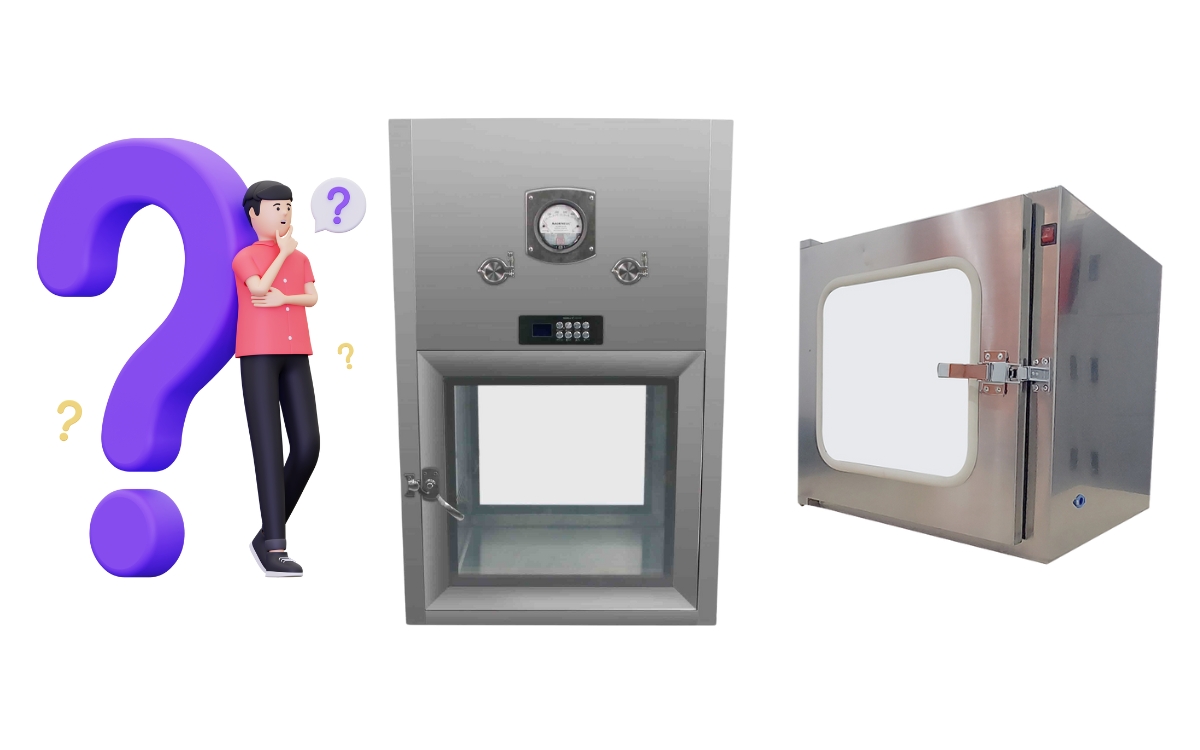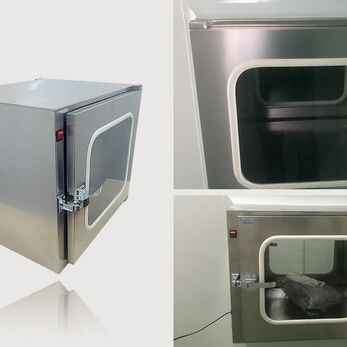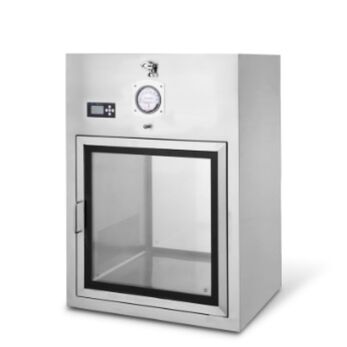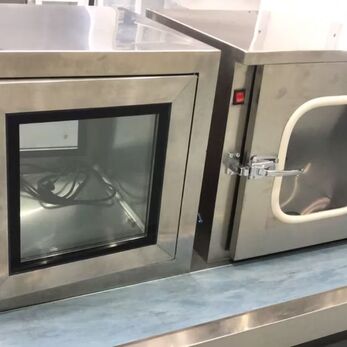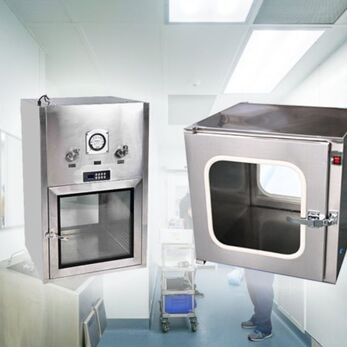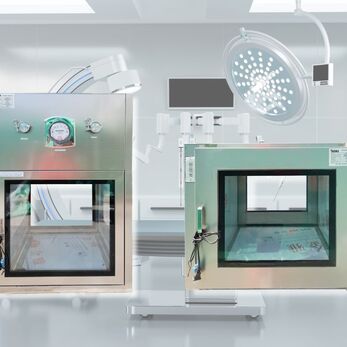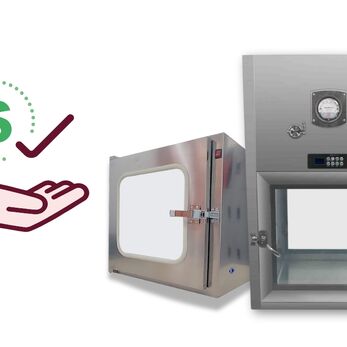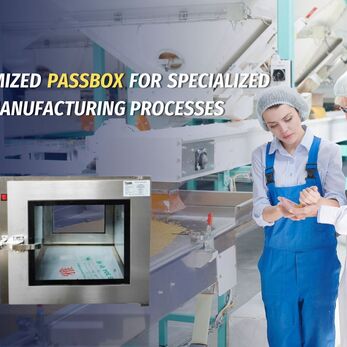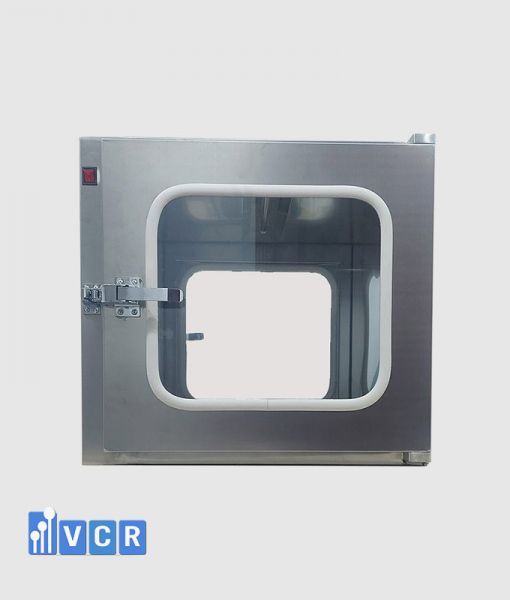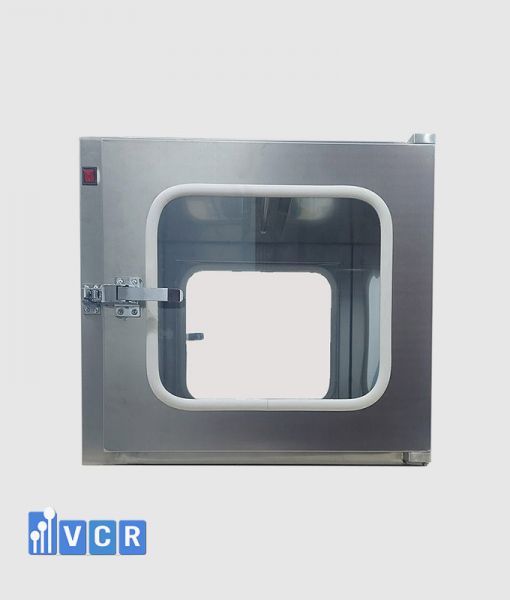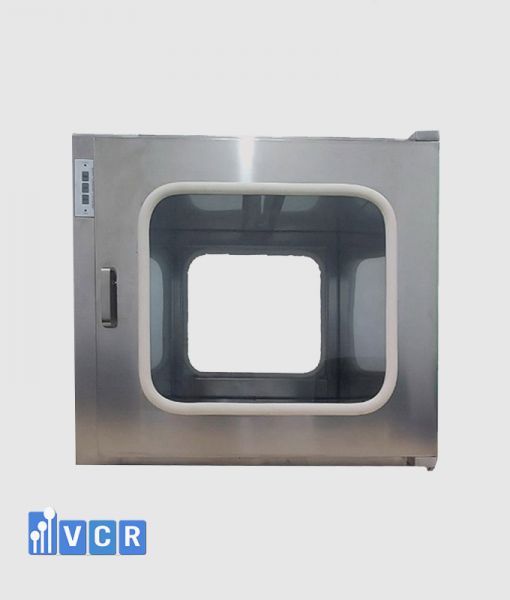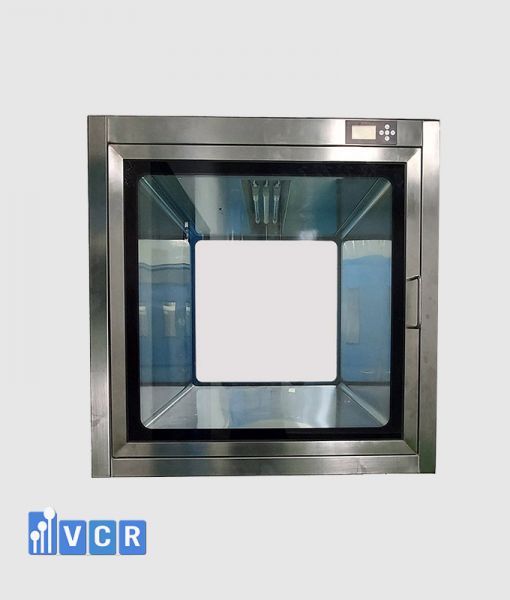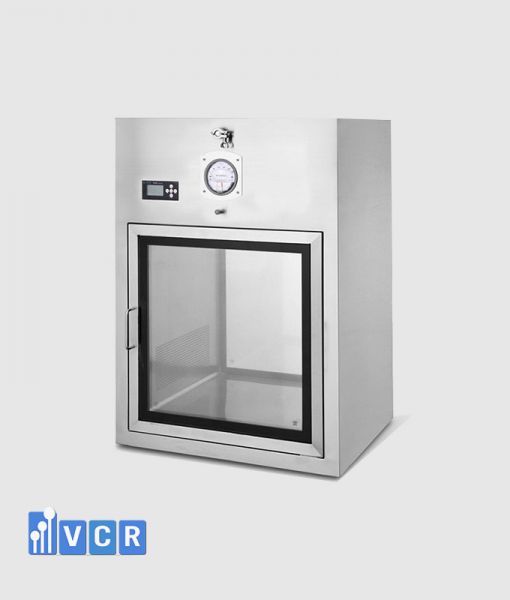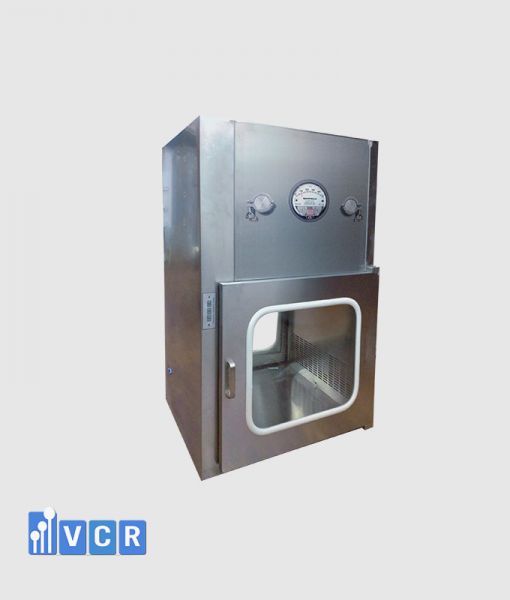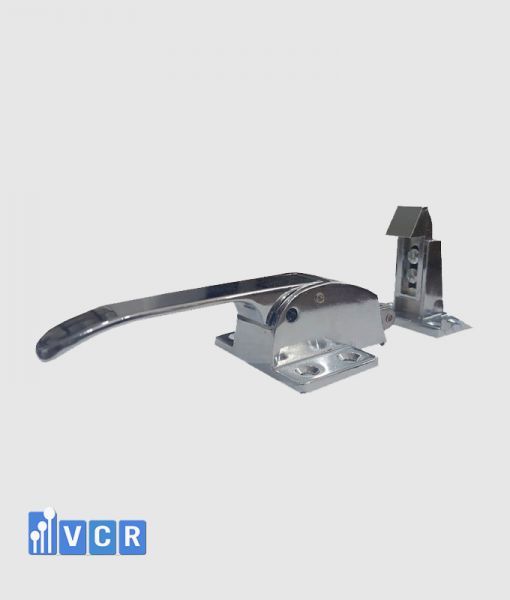Pass Box is a device that transfers items between two areas with different cleanliness levels, playing an important role in preventing dust, maintaining cleanliness and protecting electronic components from electrostatic discharge. In electronics factories, Pass Box is a mandatory device to ensure production quality.
- 1. What is a Pass Box? Why Is It Essential in Electronics Manufacturing?
- 2. Common Types of Pass Boxes in the Electronics Industry
- 3. Latest Pass Box Pricing (Updated August 2025)
- 4. How to Choose the Right Pass Box for Your Electronics Factory
- 5. Common Mistakes When Choosing a Pass Box
- 6. Frequently Asked Questions (FAQs) About Pass Boxes in Electronics Manufacturing
- 7. Contact & Request a Quote
1. What is a Pass Box? Why Is It Essential in Electronics Manufacturing?
A Pass Box is a transfer chamber used to move materials between two areas with different cleanroom classifications - for example, between a cleanroom and a non-controlled area, or between two cleanrooms within a facility. Its primary role is to minimize cross-contamination of dust and particulates during material transfer.
Key Functions of a Pass Box:
- Dust & Microbial Control: Prevents contaminants from entering the cleanroom during the transfer of components or tools.
- Maintains Pressure & Cleanliness: Helps preserve the differential pressure and airflow integrity between separate clean zones.
- Reduces Electrostatic Discharge (ESD) Risks: Some models include grounding systems to protect sensitive electronic components from static damage.
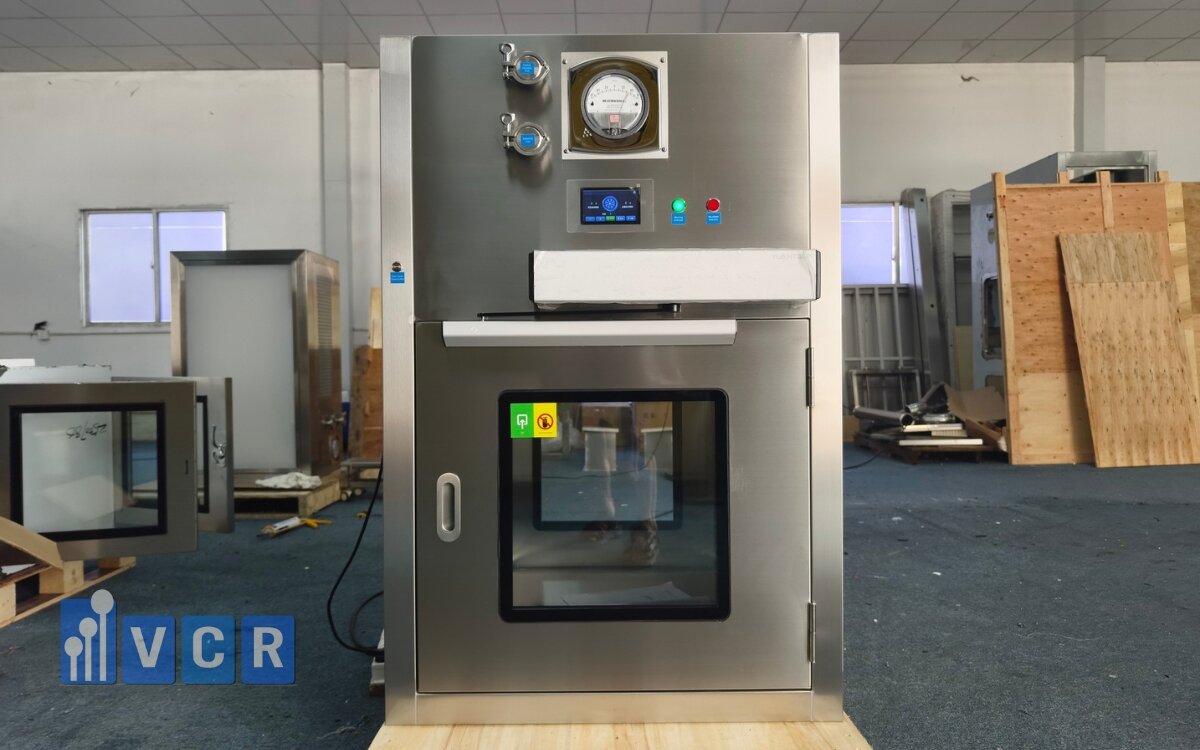
Why is it essential in electronics factories?
In electronics manufacturing (SMT, PCB, AOI, chip labs...), fine dust and ESD can cause product failure and reduce the yield rate. Therefore, Pass Boxes are mandatory in critical areas such as:
- Material entry points into production lines
- Testing and inspection areas
- Analytical labs or high-grade cleanrooms
Choosing the right Pass Box helps ensure compliance with ISO 14644 standards and international ESD requirements, while protecting the performance of your entire production line.
2. Common Types of Pass Boxes in the Electronics Industry
Each electronics factory has different requirements based on cleanliness levels, ESD control, and the sensitivity of components. Below are four commonly used Pass Box types in cleanroom environments:
Manual Pass Box
- Mechanism: Manual door operation, mechanical interlock
- Advantages: Cost-effective, easy to install, low maintenance
- Applications: Auxiliary areas, low-traffic zones, or where strict control isn’t required
Ideal for small facilities or non-critical transfer points
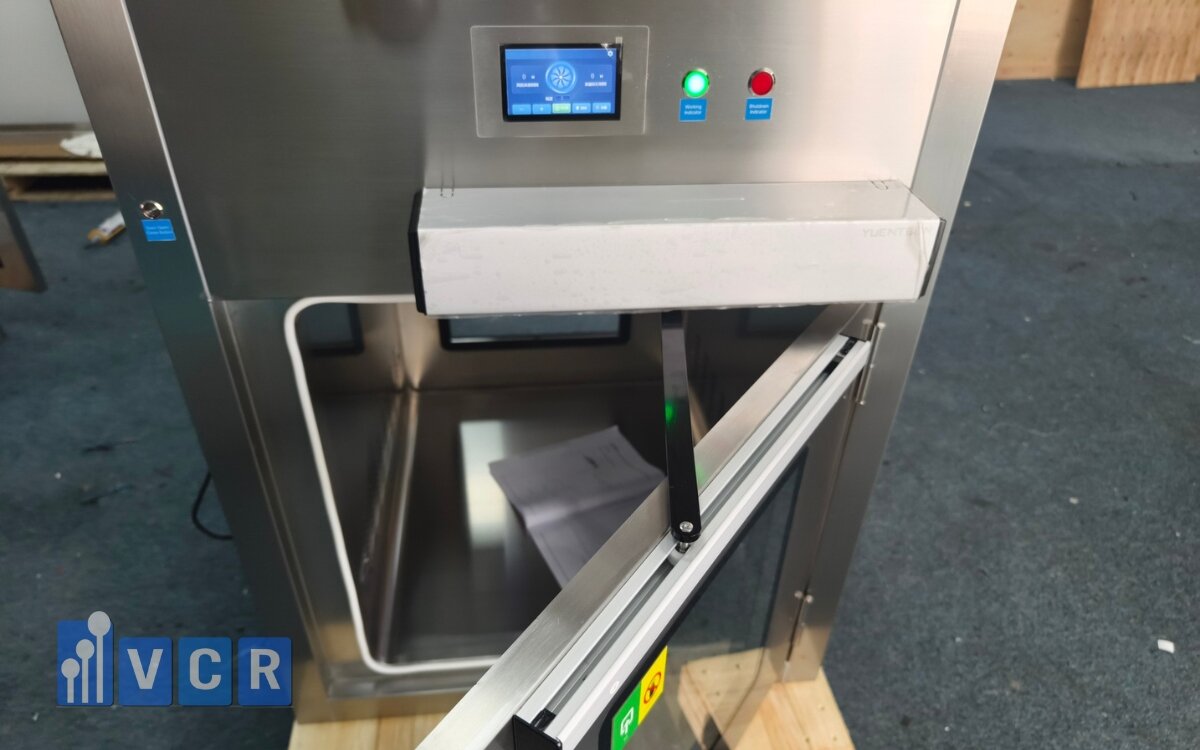
Semi-Automatic Pass Box
- Mechanism: Equipped with sensors and electromechanical interlock
- Advantages: Improves operation speed, reduces handling errors, enhances safety
- Applications: SMT lines, AOI stations, quality control checkpoints
A balanced option between cost and operational efficiency
Electronic Pass Box
- Mechanism: Fully controlled by microcontroller, programmable timing, compatible with access control systems
- Advantages: Meets strict environmental and access requirements
- Applications: Component testing zones, validation areas, export-grade production lines
Preferred in ISO/GMP-certified manufacturing facilities
UV/HEPA Integrated Pass Box
- Mechanism: Equipped with UV sterilization and/or HEPA filtration system
- Advantages: Offers maximum protection against microbial and ultra-fine particulate contamination
- Applications: Analytical labs, microchip assembly, MEMS, or camera module areas
Premium-grade solution for ultra-clean or validation-critical zones
See more: Pass Box Maintenance in Hospital Cleanrooms: Ensuring Sterility and Longevity
3. Latest Pass Box Pricing (Updated August 2025)
Depending on the level of cleanliness and operational needs in each area of an electronics factory, Pass Box pricing varies based on model and configuration. Below is the latest reference price list:
|
Type of Pass Box |
Starting Price |
Recommended Applications |
|
Manual Pass Box |
From 5,500,000 VND |
Material storage rooms, hallways, low-risk zones |
|
Semi-Automatic Pass Box |
From 9,800,000 VND |
SMT lines, AOI areas, primary assembly zones |
|
Electronic Pass Box |
From 13,500,000 VND |
Testing labs, high-security controlled environments |
|
UV/HEPA Pass Box |
Contact for pricing |
Analytical labs, ultra-clean areas, micro-processing zones |
Notes:
- Prices include VAT
- Shipping and installation costs are not included
- Material options: Hairline stainless steel (SUS 304), mirror-polished SUS, or powder-coated steel in gray
- Final pricing may vary depending on dimensions, number of doors, ESD, UV, or HEPA requirements
4. How to Choose the Right Pass Box for Your Electronics Factory
Selecting the appropriate Pass Box ensures not only optimal investment but also compliance with cleanroom standards and protection for sensitive electronic components. Here are the key selection criteria:
Based on Cleanroom Classification
- ISO 7-8: Use interlocked Pass Boxes (semi-automatic or electronic) to prevent both doors from being opened simultaneously, which may disturb airflow and cleanliness.
- ISO 6 and above (microchip, clean test zones): Prefer Pass Boxes with HEPA filters or UV lamps to eliminate microparticles and enhance contamination control.
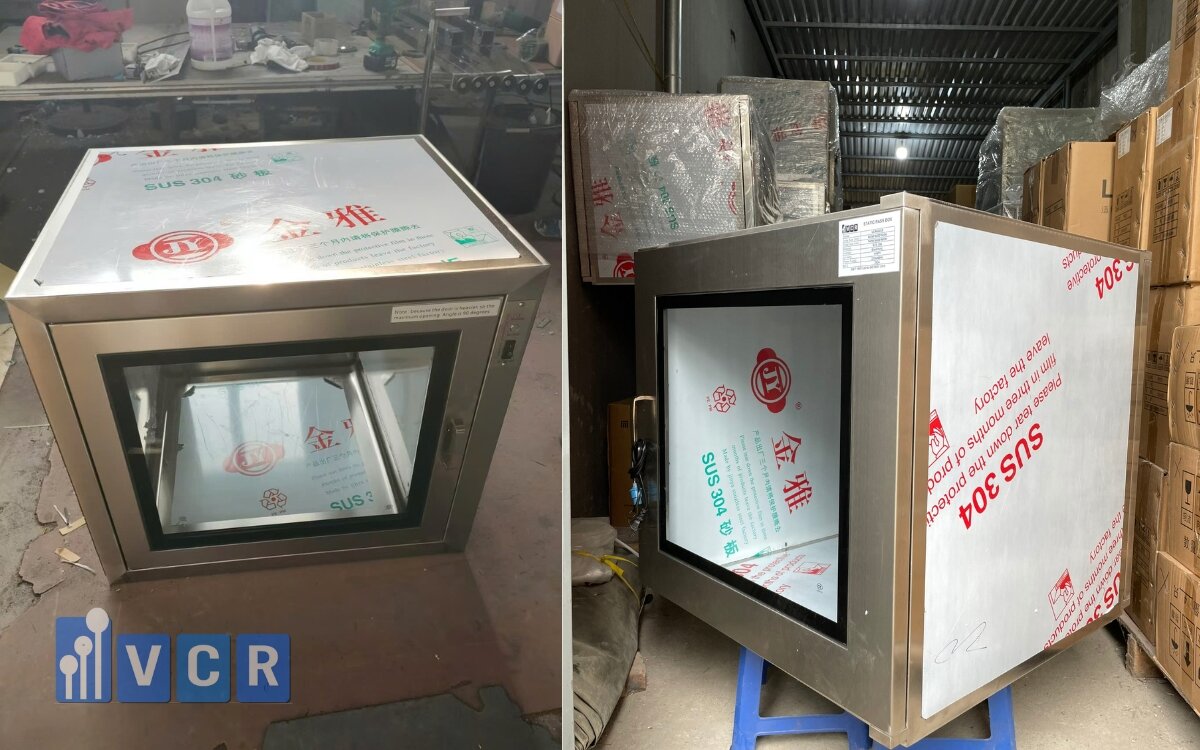
Based on Installation Location
|
Factory Zone |
Recommended Pass Box Type |
|
Near material storage / auxiliary areas |
Manual Pass Box - affordable, easy to replace |
|
Entry to production line |
Semi-Automatic Pass Box - fast, stable operation |
|
Testing lab / AOI / clean zones |
Electronic Pass Box with UV and/or ESD features |
The closer to critical environments like test labs or camera module areas, the stricter the Pass Box requirements should be.
Based on Frequency of Use
- Less than 20 transfers/day: Manual or semi-automatic Pass Box is sufficient.
- More than 50 transfers/day: Opt for semi-automatic or electronic models for higher durability and error-free operation.
See more: Optimizing Pass Box Requirements in Negative Pressure Environments
5. Common Mistakes When Choosing a Pass Box
Investing in a Pass Box may seem simple, but in reality, there are many hidden risks if your factory doesn't properly assess its needs and technical requirements. Below are three common mistakes found in electronics manufacturing facilities:
1. Choosing the wrong type - violating ISO/GMP standards
Many factories select manual Pass Boxes even for high-grade clean areas (ISO 7-8) or skip the interlocking mechanism. This leads to:
- Cross-contamination when both doors are opened at once
- Failing GMP or ISO 14644 audits
- Rejection from clients during production line certifications
Solution: Always match the Pass Box type with your cleanroom classification and installation zone.
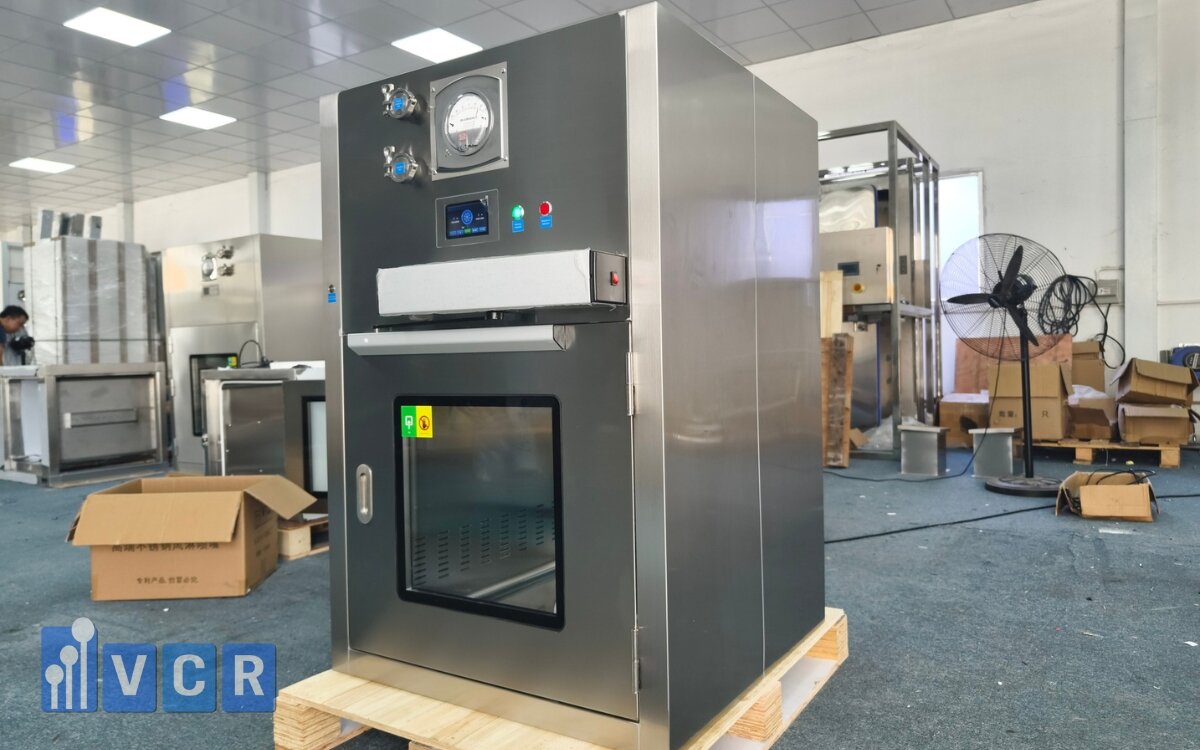
2. Ignoring Electrostatic Discharge (ESD) protection
Electrostatic discharge is a silent killer in electronics manufacturing. Some companies opt for low-cost Pass Boxes without grounding, which risks damaging sensitive microcircuits.
Solution: Ask suppliers to provide proof of ESD protection, such as grounding terminals or anti-static materials.
3. Purchasing non-certified or low-quality equipment
Low-grade Pass Boxes typically:
- Use fake stainless steel (e.g., 201) prone to rust
- Lack material certification (CO, CQ)
- Feature poor assembly and do not meet cleanroom standards
Solution: Work with a reputable manufacturer like VCR, which provides full documentation, material certifications (SUS 304), and detailed engineering drawings.
See more: Expert Guide to Dynamic Pass Box Maintenance and Repair
6. Frequently Asked Questions (FAQs) About Pass Boxes in Electronics Manufacturing
Do Pass Boxes require ESD grounding?
Yes. Electronic components are highly sensitive to static discharge. Pass Boxes used in SMT, AOI, or testing areas should be equipped with ESD grounding systems or constructed using anti-static materials to ensure product safety and meet ISO/GMP compliance.

Can I order a custom-size Pass Box based on my factory layout?
Absolutely. VCR offers custom-built Pass Boxes according to your specific dimensions (width, height, depth) and site conditions-whether you're working with wall panels, steel frames, or airlock corridors.
Does VCR provide on-site installation?
Yes. VCR offers nationwide delivery and installation, especially for large-scale electronics projects or factories located in industrial zones. Our technical team supports on-site measurement, grounding checks, and operational training.
See more: Pass box installation procedure
7. Contact & Request a Quote
Looking for the right Pass Box for your electronics facility?
VCR provides full support-from model selection and custom layout design to installation and documentation (CO, CQ, drawings, catalogs).
Request now:
- Detailed pricing by Pass Box type
- Configuration consulting that meets ISO/GMP standards
- Material samples and engineering drawings upon request
Contact us:
Hotline: 090.123.9008
Email: [email protected]
Website: https://Pass Box.vn
Diep VCR




